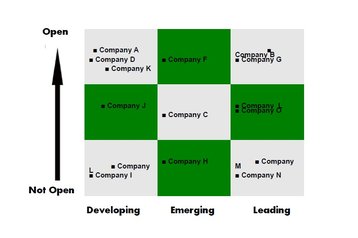Open, commoditized IT equipment doesn’t just save money, it enables better data centers. When customers escape vendor lock-in, they gain flexibility, and when the hardware and software they buy is truly open (as in open source), they gain the power to get exactly what they want.
That’s why DCD runs StackingIT as a platform to track the progress and explore the possibilities with open technologies. But there’s a problem: how do we know that vendors are being truly open? When manufacturers present their equipment as “open” it can mean a number of things. There could be open APIs. It could comply with formal or de facto standards. Or the product could be based on open source code and designs, so you can see exactly how it works and how it might be improved. Though even then, there could be caveats.
Proprietary tricks
What if you can only make proper use of this open source product through a proprietary dashboard? What if the open source part of the product provides only a fraction of the functions you need, or is a fork from a better supported open source project?
Because “open” is now seen as a desirable trait, vendors are going to start applying what we might call “open wash” – finding ways to use that label on products that perhaps don’t deserve it. And some users will be fooled, because some open technologies are only just finding their way into widespread use.
How do we guard against this? The answer may be emerging from our StackingIT events. The Open Performance Grid (OPG) is a proposal for a chart that will rate vendors for how open they really are. If vendors are not what they claim to be, the grid could combat their open wash with “open shaming,” placing them at the bottom of the open scale for all to see.
Minds are like parachutes: they are only really useful if they are open.
Frank Zappa
It’s also more positive than that: the OPG could guide users’ buying decisions, placing the power where it should be – in their hands. It might get complicated. “Open” will be measured in various dimensions, including the size of the contributing community to a given technology and the way it is licensed. Different factors will have to be weighted, and maybe weighted differently according to who is looking at the grid.
Can you help?
Take a theoretical example: HP and Dell have both launched servers aimed at service providers. HP’s CloudLine servers could well score higher than Dell’s Datacenter Scalable Solutions products, because HP is meeting the Open Compute Project specifications and Dell isn’t. To work properly, the grid must be developed by a community in which vendors and users have broad agreements about how best to collate and present results.
The next step is to see some prototypes, to build some web demonstrations, and start having talks about which attributes will weigh heaviest in the way companies are placed. But at the DCD-as-a-Service event in Chicago, some of these discussions started. We’ll come back to the topic again at our London event - and we want as much participation as we can get. We want to produce something concrete in 2016, although it is still being shaped.
As Frank Zappa said: “Minds are like parachutes: they are only really useful if they are open.”
This article appeared in the November 2015 issue of DatacenterDynamics magazine



